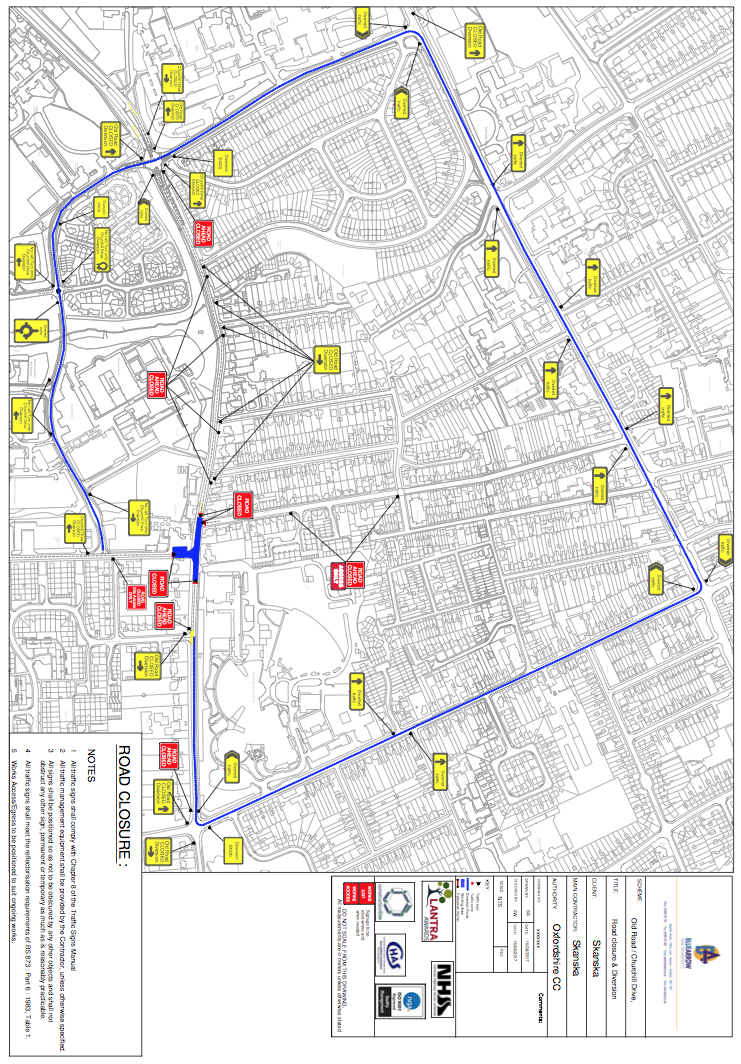Here is the response made by the Lib Dem Group to the City’s Council consultation
RESPONSE TO DRAFT HOUSING & HOMELESSNESS STRATEGY
2018-2021
INTRODUCTION
This is a response from the Housing & Homelessness sub-committee on behalf of the Liberal Democrat City Councillors’ Group.
Housing and Homelessness are both huge national problems. Oxford City Council has decided to include both in one strategy, together with the difficult issue of bringing empty properties back into use. This seems a reasonable way of dealing with overlapping problems.
Chapter 3: Oxford’s Housing Challenge
COMMENTS & RECOMMENDATIONS
- We support a renewal of council house building and oppose the right to buy; we support the introduction of legislation to facilitate this.
- We consider it important to support first time buyers and local people trying to up-size their homes. A policy prohibiting the sale of new-build houses and flats to people who will use them as second homes, or whose primary residence is outside Oxford’s environs, would prevent Buy to Let and would stop holiday home owners out-competing local and first time buyers. Similar policies are being employed in Exmoor National Park and St Ives, Cornwall to good effect.
- We should promote community land trust development, where the freehold is owned by the community and people acquire low(er) cost homes and pay just for the bricks and mortar.
- We should encourage better occupancy of property – higher rates on empty and significantly under occupied property could be adopted.
- Lastly, good public transport and top-notch public parks and gardens are vital if high density housing is to be successful.
Chapter 4: INCREASE THE SUPPLY AND IMPROVE ACCESS TO AFFORDABLE HOUSING
COMMENTS on Affordability:
The Housing and Homelessness Strategy (H&HS) makes frequent mention of affordability. The authors note that in terms of median income, housing in Oxford has become markedly more expensive in recent years. Despite this awareness of the lack of affordability, when affordability is mentioned in the context of new development no definition is given. This lack of clarity allows developers to set their own definition, with the term ‘affordable housing’ having no meaning, and little value.
RECOMMENDATION: For each subtype of property (e.g. an 80 sq.m. 2 bedroom,1 bathroom flat), or for each council tax band, if that is the preferred method, officers should consider providing a definition of what would be an “affordable” price. Given the high utility of linking prices to income, we recommend expressing this in terms of local Gross Disposable Housing Income (GDHI). In Oxford this was approx. £28k in 2015) [1]. Council tax bands may be useful to capture some variation, i.e. ‘very affordable’, ‘affordable’, ‘market value’ but will be a blunter tool for defining affordability.
Chapter 5: PREVENT HOMELESSNESS AND MEET THE NEEDS OF VULNERABLE PEOPLE
COMMENTS:
- An urgent need for Increased Funding
The H&HS does not adequately recognize the scale of this problem, which has been escalating throughout the country over the last seven years.
The Guardian (13 October 2017) reports the National Audit Office’s figure for Autumn 2016 of 4,100 rough sleepers, an increase of 134% since 2010. However, the homelessness charity Crisis estimates that the current average number of rough sleepers in the UK is 9,000.
A recent study by Heriot-Watt University showed that, if Government policy did not change, the number of homeless people would reach 575,000 by 2041, up from 236,000 in 2016. The estimate of 575,000 includes 40,000 rough sleepers.
This is a social epidemic.
The Government has responded, but only recently, by announcing the funding of a Homelessness Prevention Trailblazer initiative. This will provide help to the homeless in several of the UK’s cities, one of which is Oxford. Para 5.39 refers to the £790,000 available to the City under this scheme.
The Government has said it is committed to “eliminate(ing) rough sleeping entirely.”
RECOMMENDATION: Oxford City should combine with other cities selected to receive this funding, to press the Government to (a) increase Trailblazer resources and (b) stop the further roll out of universal benefit until it can be better managed, in particular by reducing the 6 week period between application and receipt of this benefit, and by providing emergency payments during those interim weeks and a long ‘claw-back’ period for such payments.
Amyas Morse, Auditor General, says the DWP has failed to evaluate the impact of benefit changes on Homelessness. He says “It is difficult to understand why the Department persisted with its light touch approach.”
- Private Rented Sector
The National Audit Office has advised that the number of homeless families in the UK has risen by more than 60% and this is likely to have been driven by the Government’s welfare reforms. Private sector rents have gone up by 3x as much as wages since 2010 – except in N& E Midlands.
The Local Government Association said on 13 October 2017: ‘Councils have to plug the gap between rising rents and frozen housing benefit.’
The H&HS draft discusses liaising with private landlords to keep private sector tenancies going, and confirms that the PRS team can advise on schemes such as Home Choice, the Rent Deposit Guarantee Scheme, Real Lettings Scheme.
RECOMMENDATION: The PRS team is clearly vital in maintaining relationships with existing Landlords and in encouraging others (only 3% at present) to take tenants on housing/universal benefit. Advice on all these schemes should be clearly set out and widely available in community centres, libraries etc. The Council needs to consider whether this team needs to be increased in size to match the growth in homelessness from tenancies terminated in the private sector.
- Rough Sleepers
The H&HS draft includes, at p.69:
(i) ‘exploring flexible options to accommodate or support homeless rough sleepers …who have no local connection to the city or anywhere else, and no recourse to public funds’
COMMENT
This is an important step towards making provision for those who have previously fallen outside the safety net of local connection. Provision may be made by providing travel costs to a place where the rough sleeper (RS) does have a local connection. However, if a RS has lived on the streets of Oxford for, say, 12 months, should there not come a point where the City provides for him locally if no other connection can be established? This is an important debate, which may lead to calls for a national policy of support.
RECOMMENDATION 1: The H&HS draft needs to specify how these people can become eligible for Oxfordshire services, and how they can then access accommodation and the homelessness pathway. Without a clear strategy defining who can access support, it is likely that few in this group will see much improvement in their current drifting life style.
RECOMMENDATION 2:
The City Council should draw up a list of minimum requirements to meet the needs of RSs – this should include a substantial increase in shower facilities, possibly at drop in centres like the Gatehouse, and provision of clothes for interviews.
(ii) ‘ensure adequate crisis accommodation including winter and severe weather provision’
COMMENT
For a civilised city, this is no more than a basic humanitarian response.
RECOMMENDATION 3: The H&HS needs to include an appendix, continually updated, of accommodation available for rough sleepers in cold weather. The point at which ’severe weather’ provision is triggered is currently three successive nights at freezing temperatures. This should be reconsidered – a fridge runs at approx. 4 degrees C so no one should be expected to sleep safely outside at that temperature.
The churches and other institutions offering crisis accommodation should be given ongoing training and support, and additional places should be sought. A sit-up room is not adequate.
- Punitive Measures
These have been applied to rough sleepers by many local authorities. These include Oxford. The imposition of Commmunity Protection Notices in this city on 19 July 2017 made the national as well as the local press. The notices, accompanied by a letter, were pinned to the property of rough sleepers in the city centre, requiring them to remove their property to storage within 24 hours, failing which a fine of £2,500 could be levied.
This action was represented by the Board Member for Housing in Council on 2 October as a Health and Safety issue – fire escape exits were allegedly blocked by rough sleepers’ possessions – although the use of fire regulation powers could have solved this apparent issue without recourse to CPNs.
The H&HS Draft makes no mention of community protection notices, and refers to the imposition of penalties on rough sleepers in the most minimal terms: para 5.78: ‘as a last resort (the Council) will explore the use of various legislations’.
RECOMMENDATION 1:
The Strategy should include a clear set of rules, establishing the criteria upon which CPNs could be issued. An individual CPN would have to be authorized in writing by the Legal Department and by the Head of Service in each case.
RECOMMENDATION 2:
The use of other punitive measures e.g. Anti-Social Behavior Orders, Public Spaces Protection Orders, should be subject to the same set of rules as PCNs.
- Establishing a Stakeholder/Partnership Forum
COMMENT
This is an important idea that needs to be expanded on in the strategy. Which institutions e.g. large/small businesses, colleges, are to be approached? Is the creation of this forum underway?
RECOMMENDATION: Advertise this project widely and encourage the forum to come forward with new initiatives.
Chapter 6: MAKING BEST USE OF PRIVATE SECTOR ACCOMMODATION
COMMENTS on management of HMOs
We welcome the commitment in the Consultation Document to improved enforcement of controls over houses in multiple occupation (HMOs) including the commitment to require HMOs to meet Energy Level 3 from April 2018. However more specific commitments are needed.
It is estimated that less than half of all HMOs in Oxford are legally licensed as they should be. While Oxford does better than some other local authorities in enforcing HMO licensing, with 25 prosecutions a year as compared with a national average per local authority of less than 2 a year, much more is needed.
It is intolerable that landlords are able to continue to make large profits by letting properties without the basic safety and amenity standards required for licensing as an HMO.
Nevertheless, we consider that HMOs are an effective way of providing housing for people, provided that they are operating to good standards.
RECOMMENDATION1:
We would urge the Council to set an ambitious target to increase the number of HMOs which are properly licensed by 500 a year in each of the next three years. Meeting that target would still not ensure that all HMOs in Oxford are licensed, but would represent a substantial improvement on the present situation.
RECOMMENDATION 2:
We believe that good use can be made of the new powers introduced by the Housing and Planning Act 2016 for local authorities to impose civil penalties. These powers are more time-consuming to operate than a prosecution in the magistrate’s court, but can ensure meaningful penalties of up to £30,000, the proceeds of which can be retained by the local authority (unlike fines imposed after conviction in court). Imposition of substantial civil penalties should enable additional staff to be funded to ensure the enforcement of the licensing provisions and other laws relating to safety of rented housing, and should also encourage many more landlords to register voluntarily.
RECOMMENDATION 3:
As well as campaigning for better-regulated HMOs the Council should promote better quality HMOs as a good choice for young working people wanting to live in Oxford.
The Council should encourage the supply of HMOs. This should include new build HMOs, given that HMOs can be particularly effective at using space well.
RECOMMENDATION 4:
University and College owned HMOs are exempted from consideration in the H&HS. It would be helpful in creating an accurate picture of how HMOs are spread across the City if University/College HMOs could be listed and included in the overall figures, preferably on a ward basis.
COMMENTS on Bringing Empty Buildings back into use
It was not immediately clear from the H&HS draft what the exact nature of the empty homes in the area was. Is buy-to-leave investing a big problem? Or is it more the case that properties are left derelict with landlords lacking the necessary funds to invest in renovation for renting purposes? It seemed that the latter case was the more prevalent.
Penalty measures are a possibility:
1.Empty Homes Premium
There have been proposals by certain councils to advance the council tax rise of 50% for an unrented, vacant property from two years to a year. The problem with this in dealing with wealthy home owners seems clear: an additional sum of £1000 per year is unlikely to discourage them, whether the council tax rise occurs after two years or one.
2.Penalty fines
This was a London Borough’s response to discovering 300 properties left empty on Bishop’s Avenue, as revealed by the gap in the electoral register. The Borough put forward plans to enable it to fine landlords £60,000 if a property was not regularly rented.
3.EDMOS
On the evidence of history, the use of Empty Management Dwelling orders seems to be exceptionally rare.
There are also schemes to encourage landlords to renovate their properties and make them ready for rent. Awareness is the key thing. If landlords were more aware of the antisocial significance of leaving a property empty, and the council more proactive in getting involved, and citizens were more aware of the possibility of reporting the issue to an EPO, change would happen.
RECOMMENDATION !:
A greater appeal to the community to report empty housing. Currently there is no general awareness of empty housing as an issue. An easily googleable option for a proactive citizen (‘report empty house oxford’) could bring up the telephone number for the Empty Properties Officer, who could then be contacted by email or phone.
RECOMMENDATION 2:
A visible PR campaign, encouraging residents to report empty housing, and thereby develop a consciousness of the issue, would be effective, and in particular would stimulate landlord awareness.
RECOMMENDATION 3:
A greater number of officers. Our expectation would be that, as soon as the council gets in touch with landlords, things would begin to happen. In this scenario, there would need to be an increased number of officers to engage with landlords.
COMMENTS on Short Term Rentals and AirBnBs
Housing costs in Oxford have risen markedly in real terms in recent years. This is driven by macro economic factors, but also by local ones that the city council may choose to influence. In a compact tourist city with limited hotel and hostel accommodation, short-term rental of furnished apartments is extremely lucrative. With the rise of websites such as AirBnB (not mentioned in H&HS), a significant and rising number of properties are being marketed as short-term rentals, reducing property supply and thereby driving up prices for residents. A series of searches carried out on the AirBnB platform suggests there are over 300 whole properties currently available for rent in Oxford. This is likely to be an underestimate owing to the presence of other platforms. Importantly, AirBnB rentals appear to be increasing at a significant rate [1] (data from London).
Short term rentals are also associated with other harmful consequences, such as pop-up brothels, with a UK parliament investigation imminent [2]. Cities such as Barcelona [3], Berlin [4], London [5], Amsterdam [5] and others have recognised the problem and have all restricted AirBnB to varying levels.
RECOMMENDATION: Oxford should adopt a similar approach to London, requiring AirBnB and other short term rental companies to limit the number of days per year that a property can be rented on the platform (max 90). This would be a reasonable compromise: allowing property owners to make income when not residing in the propery, while limiting the desirability of buy-to- short-let properties [5]. Short-let rentals that are properly registered in terms of planning would of course be exempt.
Response prepared by the Housing & Homelessness sub-committee
Liz Wade, Paul Harris, Ed Martineau, Nick Harding
1 November 2017



